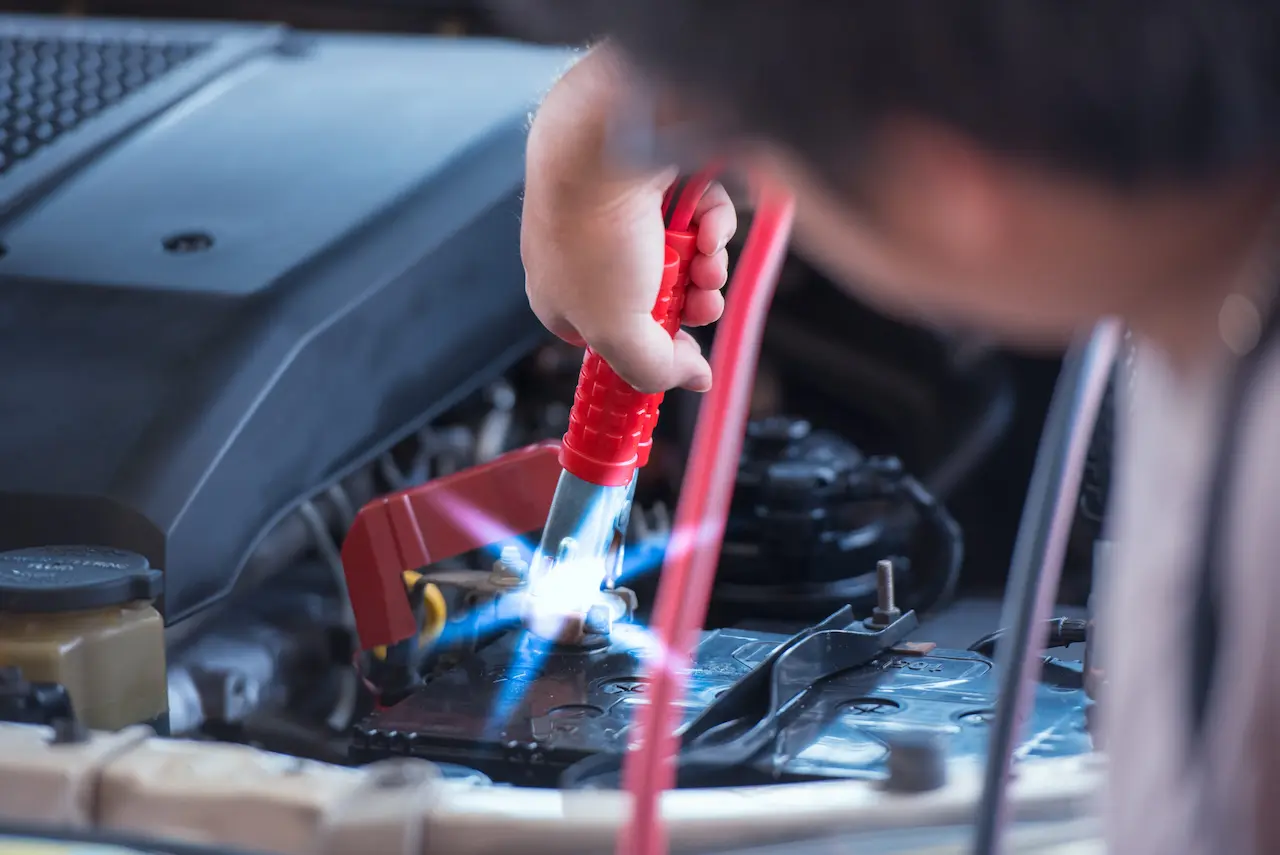A Guide To Jump Starting Your Car

A GUIDE TO JUMP-STARTING YOUR CAR
SAFETY TIPS
You should never assume you can figure out how to jump-start your car on your own because there is a small risk of injury or even death. Also, your car (or the vehicle that is supplying your juice) can be seriously damaged as well. Here are some safety tips:
- Don’t smoke near the battery! It contains sulfuric acid and these fumes are flammable!
- Wear eye protection and gloves.
- Make sure your jumper cables are in good shape.
- Don’t let the cables dangle; if they’re connected, they have power and a stray spark or contact with a puddle can be very dangerous.
- If the battery is leaking, don’t try to chance it — take it to a professional!
- If you are putting the jumper cables on the battery and aren’t sure which one goes where: STOP. Check and find out or if you’re not comfortable, find an expert. Putting the cables on the wrong charge can cause serious damage to the vehicle or can cause sparks which can ignite an explosion.
IT’S JUMP-START TIME
Here is what you need to know to jump your battery safely and efficiently.
- You will need a pair of jumper cables that are in serviceable condition as well as another vehicle. Find someone who will let you borrow their engine to transfer some power from their battery to yours.
- Pop and secure the hoods on the vehicles and locate each battery. They are typically just under the hood, but in rare instances, they may be in unusual places. If you are uncertain, check your owner’s manual. Even if it is not under the hood, there’s typically a remote battery access point there which will serve the purpose just as well.
- Place the vehicles in a position where the jumper cables can easily reach each battery, preferably with a little room to spare. Make sure both vehicles are in Park.
- Perform this next step CAREFULLY to avoid the aforementioned explosion. Starting with the RED POSITIVE JUMPER CABLES, place one clamp on the positive (+) terminal of the good battery.
- Place the other red jumper cable clamp on the positive (+) terminal of the dead battery.
- Now, take the BLACK NEGATIVE JUMPER CABLES and attach one end to the negative (-) terminal on the good battery.
- READ CAREFULLY: To prevent a spark, ground the second black clamp on some piece of unpainted metal away from the battery itself, within the car engine or body of the vehicle.
- Start the car with a good battery, letting it build a good idle.
- Once it has had a little time to build some power, attempt to start the dead battery. Warning: If the vehicle does not start immediately, don’t hold the ignition down for more than five seconds or you could overheat your started, adding a new, expensive problem to the mix. Leave approximately twenty seconds between attempts to give the battery more time to build a charge and also to let the starter cool.
- Once it starts, let it idle for a bit so the car’s system can recharge the battery some more.
- Show your appreciation for the person who lent you a helping hand, then remove the jumper cables from the vehicles in the REVERSE order of how you put them on and leave your engine running. If you turn it off, you may find yourself repeating the process.
- Make sure both hoods are closed and latched, and that all the equipment is safely stowed where it belongs.
Try to drive on the battery for 15-20 minutes to give it time to charge enough to prevent a re-occurrence. If you left your lights on and that caused the battery to die, you are probably going to be okay.
If however, you’re not sure what caused it or it happens again, you should probably have a professional take a look at it, perhaps someone from Express Auto Repair shop in Colorado Springs.
Related Posts

Get Your Car Ready for Holiday Road Trips in Colorado Springs
Get your car holiday-ready in Colorado Springs with Express Auto Repair. Our ASE-certified technicians check batteries, brakes, tires,

Is Your Car Heater Ready for Colorado Springs’ Winter?
Colorado Springs winters expose heater problems fast. With 20+ years of experience, Express Auto Repair quickly diagnoses weak

Winter Car Prep in Colorado Springs: How to Keep Your Vehicle Safe This Season
Express Auto Repair helps Colorado Springs drivers get winter-ready with expert battery, brake, tire, and fluid checks. Stay

How to Choose the Best Mechanic in Colorado Springs
Choosing the best mechanic in Colorado Springs means looking for certifications, transparent pricing, and proven experience. With over
